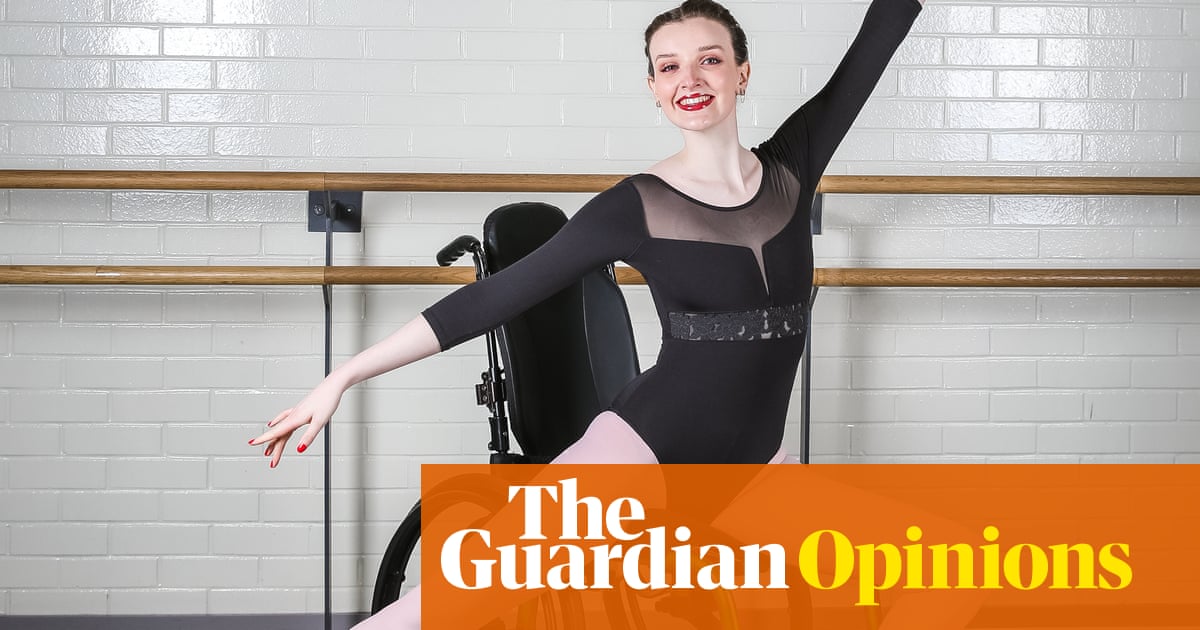
It’s not very often one gets to say this, but on Friday, I danced on national television. It was for Channel 4’s The Last Leg, the weekly chatshow hosted by Adam Hills. If dancing for the nation on TV is a rarity for most people, it’s all the more so for me – as well as being a professional dancer, I’m also a disabled wheelchair user.
It had been an exhausting day. I manage various chronic conditions that require taking more than 20 types of medication a day. I even had to rehearse some of the dance lying down. When I arrived back at the hotel room, with my dance partner and my carer, my legs were shaking badly and I had to be transferred out of my wheelchair. All for one minute on TV.
It was 3am when, having managed to settle in bed, I became aware of the hateful comments coming in on Twitter. I’ve dealt with these types of comments before. Someone once suggested that I bought my wheelchair as a “prop”, and I’ve even been reported for benefit fraud for being a disabled dance teacher in the past. But I always hope, perhaps naively, that keeping doing what I do will lead to change.
I knew my appearance on the show would cause some issues. I’m an ambulatory wheelchair user, meaning that I can use my legs in limited, particular circumstances. For the dance routine on TV, I was in my wheelchair and moving my legs. And let me tell you, trolls do not like disabled people moving limbs, especially when it could be linked to one of their favourite programmes: just this month, there was a hateful online backlash to the news that Strictly Come Dancing is hoping to have a celebrity wheelchair-using contestant this year.
I became a wheelchair user at the age of 15, around a year after I received a diagnosis of ME. ME is a poorly understood condition to begin with, so when I became a wheelchair user with ME, I felt as if I had hit a double-whammy. I was regularly told I was “lazy” or “faking it” because my condition was so variable. Even now, people often don’t believe I’m unwell because they only see me at my best.
Later in my teens, I was diagnosed with another condition, Ehlers-Danlos syndrome. I’ve had a lot of complications from this condition and because of this, I use a powerchair (an electric wheelchair). It completely baffles people that my mobility aids change depending on the day. I can go from having to have a fully reclined powerchair one day, to walking into a coffee shop with my assistance dog the next, to then being virtually unconscious for a full day because I’m so unwell.
The variability of my condition is something that I know a lot of society doesn’t understand. The truth is, I don’t really understand it either. All I ask is for people to be respectful. I’m 28, so I have spent half my life non-disabled and the other half disabled – how I was treated as a dancer before I was disabled is totally different from today.
Many ambulatory wheelchair users are scared to use their equipment because of the prejudice surrounding it. More importantly, users tend to not be eligible for crucial support, such as suitable equipment on the NHS (wheelchairs included) and benefits. Statistics show one out of three wheelchair users is ambulatory. Many of these people will have variable conditions and can also fluctuate between needing to use different mobility aids, or needing complete rest.
Disability prejudice is still very much alive, but one thing is certain. The disabled community has built an incredible support system for themselves and together we are strong enough to make a change. Hopefully, there will have been people watching the dance last Friday who will have had their preconceptions around disability challenged, reacting not with scepticism or hate, but a newfound awareness.
Kate Stanforth is an award-winning disabled dancer, model and activist from Northumberland











